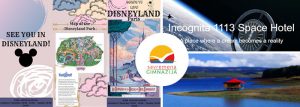
Savremena’s students attending the Combined Programme enjoy the benefit of taking both National Programme and Cambridge International Programme subjects.
One of the exams taken by Year 12 students is AS Level English Language, which enables them to master the use of the English language in communication. The exam requires them to display excellent knowledge and writing skills, while the marking guidelines and criteria are set by the University of Cambridge.
This is why Savremena’s teachers know that it’s important to motivate students at the beginning of the school year so they could develop a positive attitude towards writing and understanding the importance of adopting literary and stylistic norms in English.
Savremena’s travel brochures for different target groups
One of the students’ first assignments was to design a travel brochure. This time, the task was not the destination, but the target group for the journey. Adapting the offer and the language to the target group is the idea behind the task, but also the challenge, as this part of the exam is called “Writing for an audience”.
In the lessons that preceded this project, the students covered the topic “Travel Brochure Writing and Vocabulary”, where they discussed the importance of promotional writing, the stylistic devices used to attract the readers’ attention, the sentence structures which affect the decisions of potential buyers, etc.
The project was also adapted to students attending online lessons. They designed the brochures using Google Slides or Canva, which allowed teacher Milica Aleksić to give them guidelines and follow their progress.
The students working in pairs were assigned different target groups – pensioners, young people aged 20–25, business people who want to organize conferences, families with small children, athletes, etc. This resulted in different locations, offers, food and leisure time options, price ranges and payment options. One group of students had a special task for World Space Week – to design a space travel offer.
Savremena’s students’ creative and interdisciplinary projects
Although we know that Savremena’s students are highly creative, they managed to surprise us once more. Not only did they meet the task criteria in order to design the brochures and perform the self-evaluation, but they also presented their offer to the class in a highly professional fashion.
After the presentations, they received feedback from their peers and the teacher regarding the positive aspects of their work and those that need improving, particularly in a linguistic sense, so they could achieve the best possible score in the exam.
The project also had an interdisciplinary dimension to it, as the students were marked on the design aspect of their work in Art & Design class.
Take a look at the students’ creative works.


















